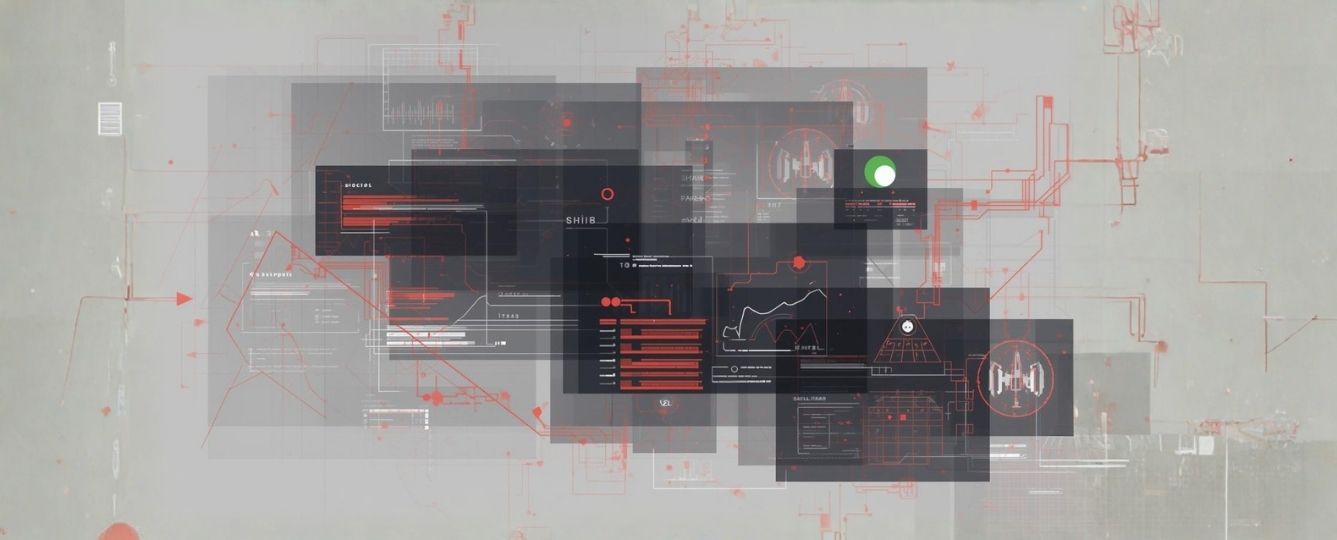
Most organisations today face a familiar challenge: protecting customer data, maintaining uptime, and preserving trust while managing an ever-growing security stack. Every new security tool strengthens one part of defence, yet together they create a system that’s harder to maintain, monitor, and adapt.
Nowhere is this pressure felt more clearly than at the application layer, where expanding web applications, APIs, and integrations connect customers, partners, and data. Each addition deepens interdependence across systems while protection remains scattered across different tools and policies.
This fragmented view makes it harder to maintain consistency and control. Modern attacks have learned to exploit these gaps, often targeting APIs and business logic rather than code alone, as we explored in Evolving API Threats in the Agentic AI Era. When defence is spread across multiple products that don’t share context, visibility narrows and response slows, leaving teams uncertain about what’s happening in real time.
If this resonates with you, you are not alone. Industry research shows that organisations now use between 60 and 75¹ different security tools. Small and medium-sized businesses face the same strain with expertise and resources spread thin. Instead of improving security posture, the growing stack can lead to higher operational costs and weaker defence.
The Hidden Costs of Fragmented Defences
Traditional security relies on multiple point solutions stitched together – a web application firewall here, DDoS mitigation there, bot management from another vendor, API protection from a fourth. Every tool brings its own deployment process, management console, and integration challenges.
The integration gaps are where problems multiply. Alerts overlap, logs live in silos, and critical insights get buried in noise. When teams spend more time maintaining tools than analysing threats, incidents linger longer and response slows.
Skills shortages make things worse. For organisations without dedicated security teams, or with small teams stretched across multiple priorities, this means vulnerabilities persist longer, false positives consume valuable time, and security degrades over time. The tools may offer sophistication, but if no one has the expertise or bandwidth to manage them properly, they’ll never deliver their full potential.
A fragmented defence costs organisation more than they expect:
- More dashboards, fewer insights
Overlapping alerts and siloed logs make correlation slow. - Higher operational overhead
Updates, rule tuning, and troubleshooting multiply across systems. - Duplicated infrastructure costs
Multiple tools may duplicate data transfer and compute charges. - Fatigue, not focus
Teams spend more time maintaining tools than improving resilience.
Organisations facing tool sprawl typically rely on multiple vendors and platforms, which makes measuring true return-on-investment nearly impossible.
WAAP: The Case for An Integrated, Unified Security Solution
For most businesses today, the web application layer is now the primary attack surface. This is where customers engage, transactions happen, and backend & third-party services integrate. Protecting this layer effectively requires a unified solution across multiple threat vectors.
This makes Web Application and API Protection (WAAP) the natural cornerstone of an integrated security strategy. Rather than assembling disparate tools, WAAP consolidates four core web app security components: (i) web application firewall (WAF), (ii) bot management, (iii) DDoS mitigation, and (iv) API security. Teams can access a single management console to achieve consistent protection and visibility across multiple websites and applications.
WAAP’s power lies not just in what it protects, but in how it delivers that protection: one deployment, one management interface, one unified security posture providing comprehensive visibility across all threat vectors.
Conversant’s MaxiSafe WAAP goes beyond these four components by unifying additional capabilities that strengthen response and control. Features such as programmable mitigation, emergency mitigation, and intelligent automation allow policies and protections to work together in context – delivering coordinated, adaptive defence without added complexity.

Three Ways Unified WAAP Simplifies Security
1. Simple Deployment
Cloud-native WAAP architecture eliminates the infrastructure changes and hardware installations that make traditional security deployments time-consuming. Pre-configured security policies tailored to common use cases mean you don’t start from scratch, building protection frameworks from the ground up.
MaxiSafe WAAP features cloud-based DNS cutover, allowing implementation in minutes rather than weeks. It comes with protection presets that lets users select the profile matching your industry and use case, and protection activates immediately.
2. Low Barrier to Expertise
With WAAP, managed security rules and automated threat intelligence updates reduce your need for human intervention. MaxiSafe WAAP’s AI-powered Web Application Firewalls (AI-WAF) self-tune based on actual application traffic patterns. This eliminates “rule babysitting” as the system learns what normal looks like for your specific applications and adapts automatically as they evolve.
Similarly, always-on DDoS mitigation with behavioural rules means teams don’t have to constantly adjust thresholds manually or analyse attack patterns to configure countermeasures. The system identifies and responds to suspicious traffic automatically.
3. Cost-Effective and Affordable
WAAP’s consolidated approach gives you a single vendor relationship instead of forcing you to manage multiple security contracts, each with its own renewal cycle, pricing structure, and negotiation requirements. One dashboard and one support contact reduce operational friction and the hidden costs of context-switching across platforms. That translates to faster time-to-protection and earlier risk reduction.
Emergency mitigation capabilities such as MaxiSafe’s kill-switch and read-only modes enable instant incident containment. If an attack penetrates your initial defences, you can immediately limit an application to read-only access or temporarily block all traffic to contain the breach, reducing potential damage and remediation costs
From Complexity to Clarity
Security shouldn’t drain resources or demand constant firefighting. Tool sprawl creates noise and fatigue; unified protection restores focus. By consolidating key web application and API security functions within a single WAAP solution, organisations can respond faster, reduce overhead, and gain clearer visibility into their actual risk posture.
MaxiSafe WAAP helps teams move toward a proactive security posture with unified, adaptive protection. It’s developed as enterprise-grade security with SMB-friendly simplicity, to deliver better results with less friction. Learn How MaxiSafe Works >>
Secure your web apps today. Start Free Trial >>



